
As a seasoned entrepreneur and the creative force behind Riverwood Landscape, I’ve spent countless hours studying and understanding the best ways to enhance curb appeal. And trust me, one of the most significant elements that can drastically improve your property’s aesthetics and value is selecting the right trees to grow in Ontario.
Over my years in landscaping, I’ve discovered how important it is to choose trees wisely for our unique Canadian climate. It’s not just about picking something that looks good – we need species that can withstand Ontario’s varying weather conditions while contributing positively to local biodiversity.
Whether you’re planning on selling your home or just want to give it a fresh new look, enhancing its curb appeal with strategically placed greenery might be easier than you think! From deciduous shade providers like Sugar Maples and Red Oaks, conifers such as White Pines or Eastern Hemlocks – there’s an abundance of choices when deciding which tree will thrive best in your particular location within Ontario.
Oak Tree
Let me tell you about the oak tree, one of Ontario’s most impressive native species. You’ll find four popular varieties in our region: White, English, Northern, and Bur. Each has its unique charm, but all share a few common traits that make them ideal for local landscapes.
First off, these trees are fast-growing. If you’re like me and love to see progress in your garden quickly, then an oak is a perfect choice! Within just a few years, they can provide ample shade and become prominent features of your landscape design.
Another significant advantage is their low-maintenance nature. Once established, oaks require minimal care to thrive – something I’ve always appreciated during my time at Riverwood Landscape. It allows homeowners more time to enjoy their outdoor space rather than tending it constantly.
One feature that makes these trees truly stand out is their stunning fall foliage coloration. As someone who’s spent decades working with Guelph Hospital on improving patient recovery through beautiful surroundings – I can attest firsthand how much beauty matters!
| Popular Varieties | Benefits | Potential Issues |
|---|---|---|
| White | Fast-Growing | Young Trees Prone To Pests And Diseases |
| English | Low-Maintenance | |
| Northern | ||
| Bur |
But let’s not sugarcoat things here – every rose has its thorn after all! Despite their many benefits, young oak trees are prone to pests and diseases which may pose some challenges for inexperienced gardeners or those new to the world of landscaping services.
To manage this risk effectively (and trust me from my experience building Riverwood Landscape into what it is today), professional guidance might be necessary at first until the tree establishes itself properly within your yard environment.
In summary folks – while an investment in professional landscaping services may initially seem daunting or unnecessary when considering planting an oak tree; think again! The potential long-term benefits far outweigh any short-term costs involved with hiring professionals experienced with managing pests & diseases threatening young oaks’ health & growth prospects.
Remember: A healthy yard isn’t just aesthetically pleasing—it also contributes significantly towards increasing overall curb appeal within any neighborhood setting across Canada as well as supporting positive environmental outcomes by providing critical habitats for various wildlife species too!
Maple Tree
When you’re considering the best trees to grow in Ontario, you can’t ignore the majestic maple. I’ve seen firsthand how well these beauties thrive here. In my journey building Riverwood Landscape into a trusted brand, maples have always been a staple in our landscaping projects.
Ontario offers an ideal environment for various types of maples. Some popular varieties that I often recommend are:
- Red
- Norway
- Sycamore
- Sugar
- Silver
Each of these has unique characteristics but they all share some common benefits that make them excellent choices for your home landscape.
Maple trees are not just about beauty; they’re practical too! They provide ample shade during hot summer days – perfect for backyard lounging or children’s play areas. And let’s not forget their stunning seasonal colors; from fresh green leaves in spring and summer to vibrant reds and oranges in autumn, there’s no denying their aesthetic appeal.
Despite its many benefits, growing maple trees isn’t without challenges – something I learned early on while working with Guelph Hospital’s landscape project. Young maples can be affected by pests and extreme cold which may pose potential issues if not addressed timely.
While investing in professional landscaping services might seem like an additional cost initially, it actually saves you from possible future expenses related to pest control and tree health maintenance.
From my experience at Riverwood Landscape, we’ve helped countless homeowners avoid such problems through our expert services – making sure their investment grows robustly year after year!
So yes, if you’re considering adding a touch of nature’s grandeur to your home setting here in Ontario – whether it’s for curb appeal or personal enjoyment – don’t overlook the humble yet magnificent maple tree.
Japanese Lilac Tree
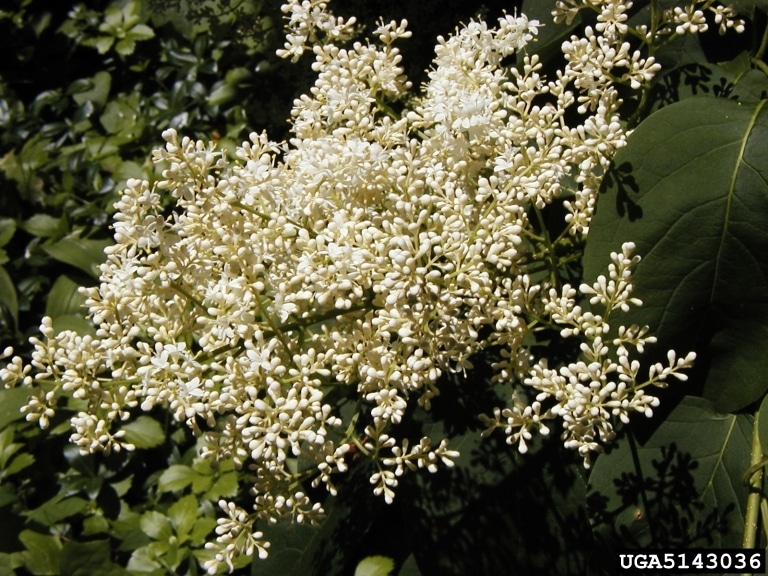
Let me tell you, the beauty of a Japanese Lilac tree is truly something to behold. I’ve seen these beauties transform ordinary Ontario yards into captivating landscapes. They’re particularly popular in smaller spaces where their compact size and remarkable accents shine.
A few standout varieties that have caught my eye include Golden Eclipse, Ivory Pillar, Ivory Silk, and Signature. Each has its unique charm, but they all share the ability to create an enchanting ambiance that’s hard to resist.
| Popular Varieties | Benefits | Potential Issues |
|---|---|---|
| Golden Eclipse, Ivory Pillar, Ivory Silk, Signature | Suitable for small spaces; beautiful accent; low-maintenance. | Requires full sun and well-draining soil |
What makes these trees a top pick for many Ontario homeowners? Well first off, they’re incredibly suitable for small spaces – perfect if you’re working with limited square footage. But it doesn’t stop there! These little gems also offer beautiful accents throughout your yard while requiring very minimal maintenance (music to any busy homeowner’s ears). Plus who can forget about those stunning clusters of creamy-white flowers that pop up every spring?
But as with anything in life worth having – it does come with some considerations you’ll need to keep in mind. The biggest one being light exposure: these trees require full sun so if your garden is on the shadier side then this might not be the best fit for you. And let’s not forget about soil drainage – proper water flow is key here folks!
Remember when I worked at Guelph Hospital? We used several Japanese Lilacs there because their low maintenance requirements were a big plus during those busy summer months!
And over at Riverwood Landscape which I built from scratch (if I may add), we’ve had numerous clients praise how adding just one or two of these lilacs dramatically enhanced their property’s curb appeal.
So whether you’re sprucing up your own backyard or aiming to make a bold statement on your block – consider incorporating this versatile tree into your landscaping plans! It could just be what takes things from good…to great!
Crabapple Tree
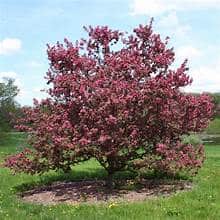
Ontario’s climate offers the perfect conditions for growing a variety of trees, and one of my personal favorites is the Crabapple Tree. This beauty has a lot to offer, from stunning spring blossoms to being an excellent choice for cross-pollination.
Here are some popular varieties that have done exceptionally well in Ontario:
- Harvest Gold
- Snowdrift
- Golden Hornet
- Sugar Tyme
Each of these types brings its own unique touch to any landscape. I’ve seen them thrive at Guelph Hospital where I’ve had the pleasure of working on their landscaping project.
One thing I love about crabapples is how easy they are to grow. They’re not fussy about soil conditions and adapt pretty well to our weather fluctuations. Not only do they enhance your curb appeal with their vibrant colors, but they also serve as great pollinators attracting bees and butterflies – this makes them an asset in any garden!
But let me be honest here – while crabapples are generally hardy, there can be potential issues as they age. Older trees can become more susceptible to pests which could require professional intervention or even removal if not handled promptly.
| Benefits | Great for cross-pollination Easy growth Beautiful spring blooms |
| Potential Issues | Susceptibility to pests with old age |
From my experience building Riverwood Landscape into a reputable brand across Canada, investing time in maintaining these trees goes a long way in preserving their health and longevity! Trust me; when it comes down choosing tree species suitable for Ontario’s landscapes – you just cannot go wrong with Crabapple Trees!
Fir Tree
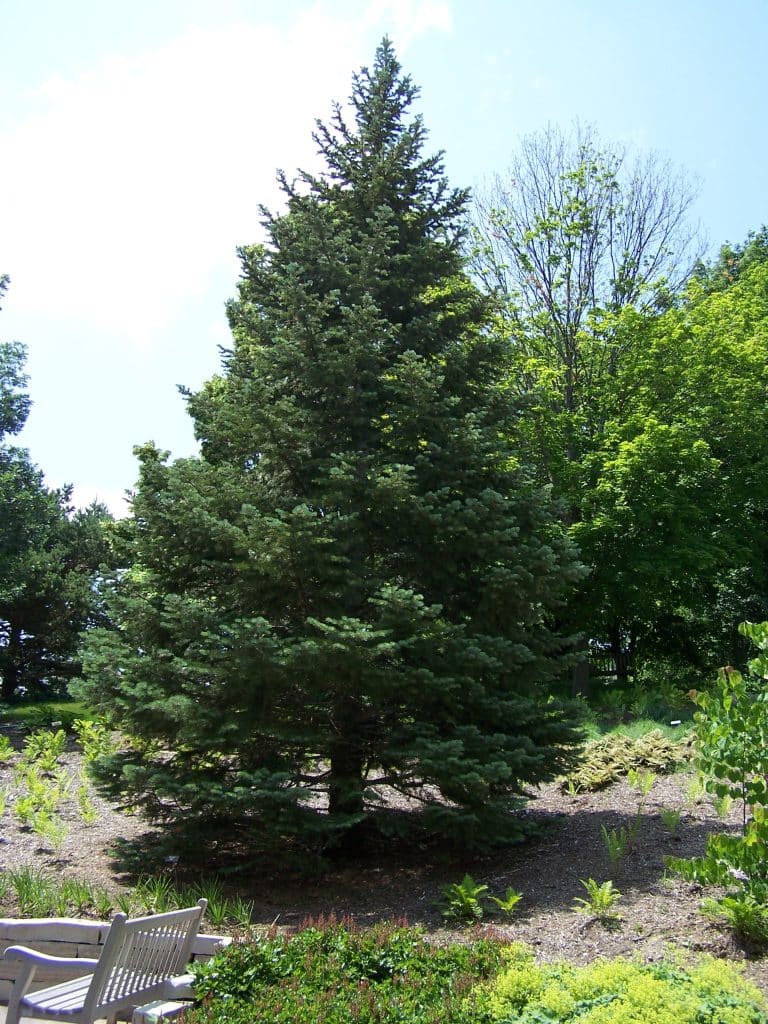
Ontario is home to a variety of trees, and among them, the Fir tree holds a special place. It’s an excellent choice for homeowners looking to enhance their property’s aesthetic while also providing practical benefits.
There are several varieties that flourish in Ontario’s climate, including the Korean, Nordmann, White, and Fraser firs. Each type has its own unique characteristics:
- Korean Fir: Known for its beautiful cones and vibrant green color.
- Nordmann Fir: Praised for its low needle drop rate.
- White Fir: Notable for its blue-green needles.
- Fraser Fir: Recognized by many as the quintessential Christmas tree.
These varieties not only add visual interest but also provide tangible advantages. One of my favorite things about fir trees is how they can create privacy barriers around your property with their dense foliage – no need to build a fence! Plus they’re relatively low-maintenance which makes them perfect even if you don’t have much time or experience in gardening.
Another benefit I’ve noticed from my work at Guelph Hospital landscaping project was that these trees attract local wildlife like birds – bringing life into your backyard!
| Popular Varieties | Benefits |
|---|---|
| Korean | Provides Privacy |
| Nordmann | Low-Maintenance |
| White | Attracts Animals |
| Fraser | All of The Above |
However it isn’t all sunshine; there can be potential issues when growing fir trees in Ontario. Overwatering is one common problem – despite our love to care (and sometimes over-care) our plants! They can also be susceptible to certain diseases but don’t let this discourage you; every plant comes with its set of challenges.
When I first started Riverwood Landscape we faced similar problems too but we learned quickly through experience what works best here in Canada and now we’re known as one of the reputable brands offering professional landscaping services!
So whether you’re considering adding some greenery or planning a full-scale landscape transformation remember: investing wisely today will ensure lush rewards tomorrow!
Hickory Tree
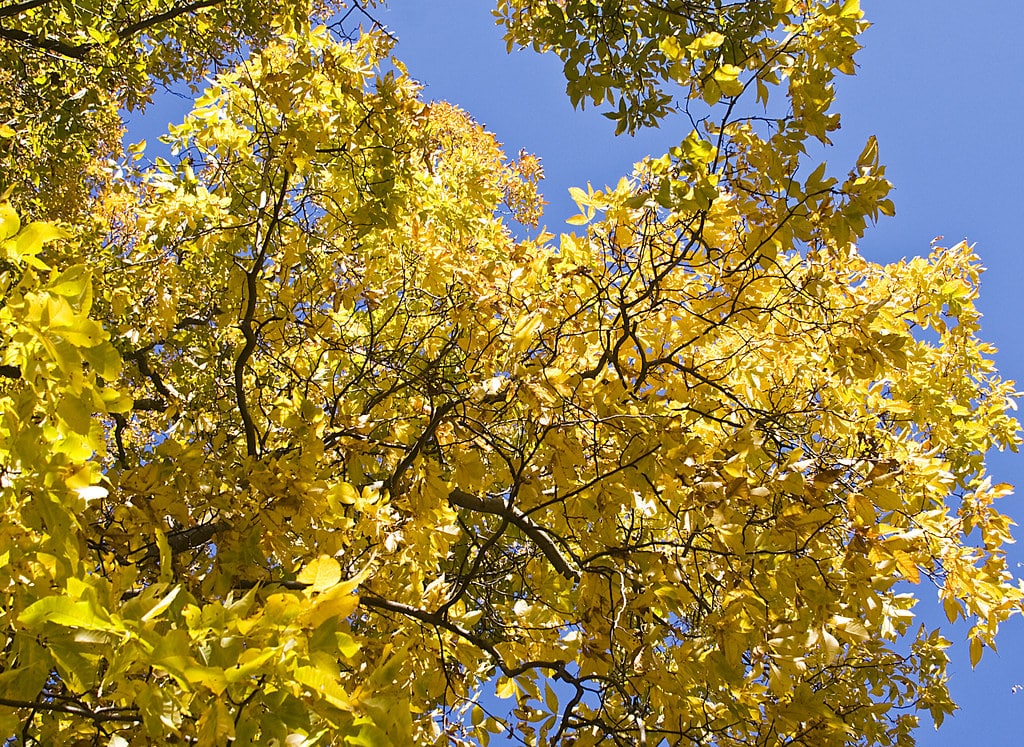
When I think about versatile and hardy trees to grow in Ontario, the hickory tree is one that certainly stands out. There’s a variety of reasons why this tree type is one of my favorites.
One thing that excites me about hickories is the range of popular varieties we can find. They include Shellbark, Bitternut, Pecan, and Shagbark. Each comes with its unique features, making it possible for homeowners to choose what fits their landscaping needs best.
Hickory trees are known for their speed when it comes to growth rates – they’re notably fast-growing! And let’s not forget another advantage; these guys produce nuts which adds an extra layer of beauty during certain seasons while providing food source for wildlife.
| Popular Varieties | Benefits | Potential Issues |
|---|---|---|
| Shellbark | Fast-growing | Insects |
| Bitternut | Produces nuts | Hickory bark beetles |
| Pecan | ||
| Shagbark |
But just like any other living entity, there are potential issues you might encounter growing a hickory tree. One common problem could be insects – especially the notorious hickory bark beetles. These little creatures can cause significant damage if left unchecked.
Now you may wonder how my experiences tie into all this? Well, during my time working at Guelph Hospital and later on as I built Riverwood Landscape into a well-respected brand in Canada’s landscaping scene, I’ve had plenty encounters with various types of trees including the robust hickories!
The key here isn’t just knowing your stuff (though that helps). It’s also being able to apply professional services effectively – something investing in professional landscaping offers. From identifying potential threats such as insect infestations early on or ensuring optimal growth conditions – all these aspects contribute significantly towards successful home gardening projects!
So next time you consider adding some new life into your garden or yard remember: The humble yet mighty hickery might be exactly what you need!
Elm Tree
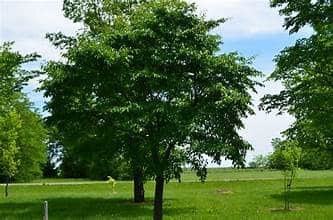
Stepping into the realm of Ontario’s favorite trees, we can’t ignore the versatile and robust Elm tree. Its popularity is not unfounded; there are several varieties that thrive in this region.
A few of these popular types include:
- American
- Chinese
- Siberian
- Ulmus Minor
Each variant has its unique characteristics but they all share a common resilience to heat. This makes them an ideal choice for those scorching Ontario summers. Plus, their expansive canopy provides much-needed shade, making your backyard a cool retreat when temperatures spike.
But it’s not all smooth sailing with Elms – there are potential issues to keep an eye out for as well. Top on this list is Dutch Elm disease which has been known to wreak havoc on these trees if left unchecked. Additionally, Elms can be prone to insect infestations which could weaken them over time.
From my experience running Riverwood Landscape and working with Guelph Hospital on various landscaping projects, I’ve found professional care crucial in maintaining healthy Elms. Regular check-ups by a certified arborist will help spot signs of diseases or pests early enough before significant damage occurs.
Investing in professional landscaping services also ensures your trees get the right nutrients and pruning needed for optimal growth – benefits that extend beyond just the health of your trees but also significantly boost curb appeal! Trust me when I say – nothing says ‘elegance’ quite like well-manicured elms gracing your property!
So while considering planting elm trees in Ontario involves assessing both their advantages and potential challenges – remember that every good thing requires effort! With proper care and attention (and maybe some expert help), you’ll find growing elms rewarding both aesthetically and functionally!
Japanese Maple Tree
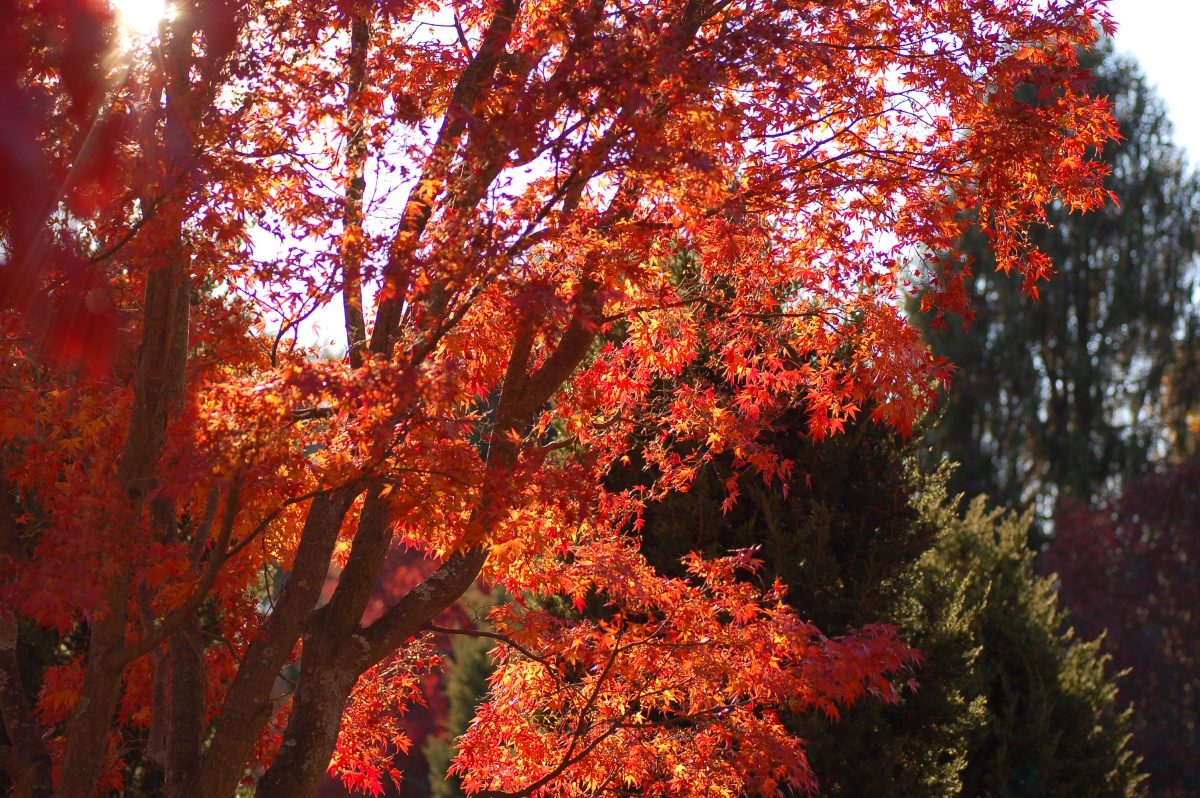
Let me share some insights about the Japanese Maple Tree, a top pick for many Ontario homeowners. With its dazzling fall colors and graceful growth habit, it’s no wonder this tree is beloved.
Two popular varieties of the Japanese Maple are Dissectum and Palmatum. Both offer stunning visual appeal with their unique leaf shapes and vibrant color displays throughout different seasons.
The Dissectum variety, also known as laceleaf maple due to its finely cut leaves, typically grows into a round shape with drooping branches that sway beautifully in the breeze. On the other hand, Palmatum or palmate maples have more traditional leaf forms but still deliver an impressive autumnal show of fiery reds or bright yellows.
One major advantage of growing these trees is their suitability for small spaces – they don’t require large yards to thrive! They’re ornamental beauties perfect for adding aesthetic value to any property.
But like all good things in life, these trees come with potential issues too:
- Insects: The main pest problem encountered is often from insects such as the Japanese Beetle which can cause considerable damage if not controlled.
- Extreme cold weather: While they are hardy creatures overall, extreme cold conditions can pose challenges so it’s important to consider your specific location when deciding on planting one.
| Potential Issue | Mitigation Strategy |
|---|---|
| Insects (e.g., Japanese Beetle) | Regular monitoring & appropriate insecticides |
| Extreme Cold Weather | Choose hardier varieties & provide winter protection |
Growing a successful garden requires careful consideration – both of what you plant and how you maintain it. And my experience building Riverwood Landscape into a respected brand has taught me just that!
So whether you’re looking at enhancing your home’s curb appeal or simply love gardening – investing time in understanding each plant’s needs will yield fruitful results down the line!
And remember – while DIY landscaping can be fulfilling – professional help could save valuable time & resources especially when dealing with pesky pests or harsh weather conditions; much like I’ve learned through my work with Guelph Hospital landscaping projects!
In essence? It pays off knowing your plants well!
Chestnut Tree
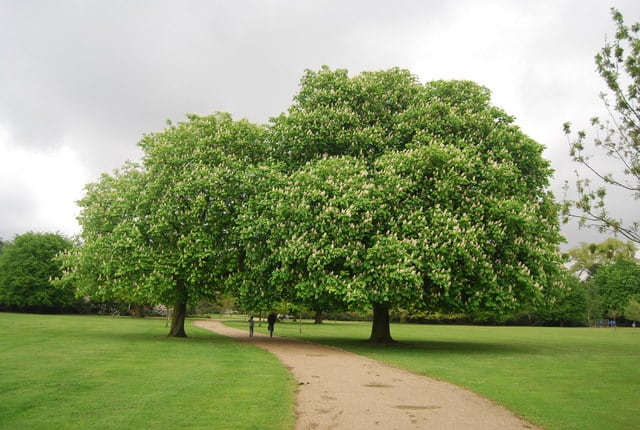
Venturing into the world of chestnut trees, you’ll find a variety that are well-suited to Ontario’s unique climate. Among the most popular varieties are the American, European, Chinese, and Japanese chestnuts.
What sets these trees apart? They’re heat lovers. Even in those scorching Ontario summers, they thrive beautifully. A perk of having them around is their ability to produce edible nuts – tasty treats that can be used in many different dishes or simply enjoyed on their own!
Here’s a quick breakdown:
| Popular Varieties | Benefits | Potential Issues |
|---|---|---|
| American | Thrives in heat | Overwatering |
| European | Produces edible nuts | |
| Chinese | ||
| Japanese |
But it isn’t all sunshine and rainbows with chestnuts! There’s one potential issue you should be aware of – overwatering. It might seem counterintuitive given how much they love warmth, but too much water can harm these resilient beauties.
My journey building Riverwood Landscape has taught me invaluable lessons about plants’ needs – including this delicate balance between hydration and oversaturation for trees like the chestnut.
Speaking from my experience working with Guelph Hospital’s landscaping project, I’ve seen firsthand how professional services make a significant difference when it comes to managing tree health effectively.
Investing time and resources into professional landscaping services may seem daunting initially for homeowners; however, I believe it’s an investment worth making for maintaining your property’s curb appeal while ensuring plant health longevity.
So if you’re considering adding some greenery to your landscape or sprucing up your garden space with new additions like a majestic Chestnut tree – remember this: every plant requires care tailored specifically towards its needs! And if that feels overwhelming? That’s where we professionals step into play!
Common Growing Factors for Ontario Trees
Let’s delve into the fascinating world of tree growth in Ontario. This is a topic close to my heart, as I’ve spent years observing and nurturing trees through Riverwood Landscape.
First off, it’s essential to understand that tree growth isn’t random—it depends on several key factors like light availability, water supply, and nutrient levels. Trees are like us—they need a balanced diet and optimal conditions to thrive!
Based on extensive research conducted across different locations including eastern Brazil (which shares similarities with certain areas of Ontario), three hypotheses were tested related to tree growth:
- Dominant trees have higher light use efficiency than subordinate ones.
- Lower variation in size distribution within plots leads to better light use efficiency.
- Uniform stand structure paired with high light-use efficiency reduces age-related decline in tree growth.
The results? Well they’re quite insightful! Dominant trees indeed showed higher rates of stem growth, superior light interception abilities and more efficient utilization of available sunlight than their subordinate counterparts—validating our first hypothesis.
For instance, at the end of an experimental rotation period (a standard term used when managing forest resources), dominant trees grew four times faster than suppressed ones due largely due their ability intercept 2.1 times more sunlight which resulted in 1.8 times greater stem growth per unit intercepted sunlight.
However there was mixed evidence regarding our second hypothesis – while some instances did show that greater uniformity among tree sizes within plots could lead lower overall average-size-tree-light-use-efficiency; this wasn’t always case proving this theory inconclusive at best.
As for third point we proposed—whether uniformity mitigates age-related decline—it seems that this isn’t necessarily true either unfortunately refuting said hypothesis altogether further proving how complex nature can be!
This knowledge underscores why attention should be paid not only towards growing dominant species but also considering thinning practices (removing select trees) enhance overall stand productivity longevity—a strategy often employed by professional landscaping services such Guelph Hospital project where I served consultant previously which greatly improved landscape appeal added value property as whole adding another feather Riverwood Landscape’s cap testament quality work we do here Canada!
So if you’re looking grow beautiful lush greenery your backyard or even embark large-scale reforestation project remember take into account these common growing factors ensure success!
Colin Macmillan is a seasoned entrepreneur and the CEO of Riverwood Landscape, a leading landscaping company based in Canada. He has been at the helm of the company since leaving high school, demonstrating his strong leadership skills and business acumen.
Colin’s expertise lies in various aspects of landscaping, including lawn care, interlocking, sod installation, and commercial maintenance. His hands-on approach and dedication to the craft have been instrumental in building Riverwood Landscape into a reputable brand.
One of his most notable achievements is the creation of a successful landscape franchise that services multiple locations. This accomplishment underscores his strategic thinking and ability to scale operations effectively.
Colin has also had the privilege of working with Guelph Hospital for landscaping and maintenance, a testament to the trust and reliability that his company has earned over the years.
His professional mission is to offer the best services and experiences for customers, a goal that he tirelessly pursues. Colin’s commitment to excellence and customer satisfaction continues to drive the growth and success of Riverwood Landscape.










